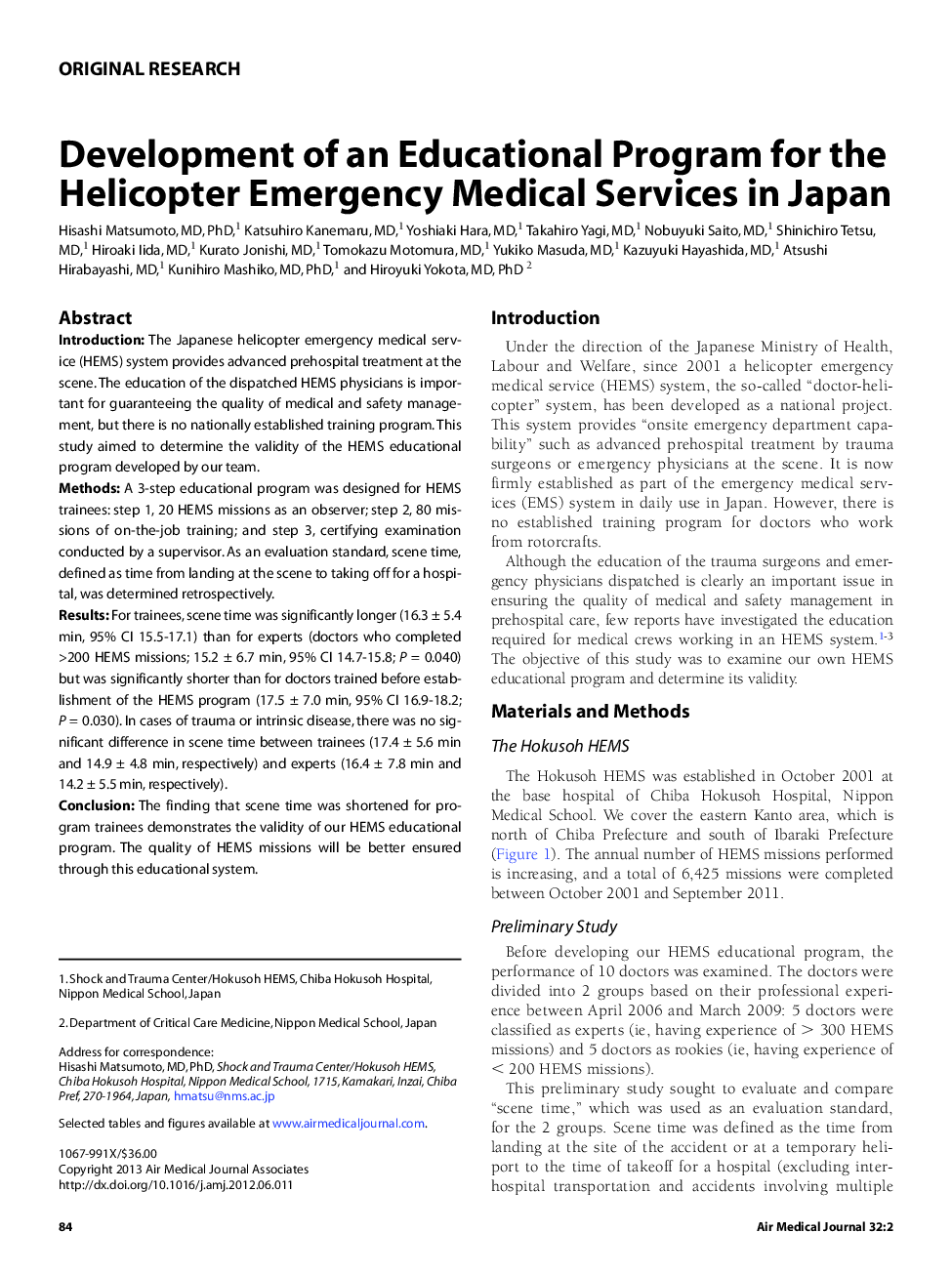| Article ID | Journal | Published Year | Pages | File Type |
|---|---|---|---|---|
| 2604718 | Air Medical Journal | 2013 | 4 Pages |
IntroductionThe Japanese helicopter emergency medical service (HEMS) system provides advanced prehospital treatment at the scene. The education of the dispatched HEMS physicians is important for guaranteeing the quality of medical and safety management, but there is no nationally established training program. This study aimed to determine the validity of the HEMS educational program developed by our team.MethodsA 3-step educational program was designed for HEMS trainees: step 1, 20 HEMS missions as an observer; step 2, 80 missions of on-the-job training; and step 3, certifying examination conducted by a supervisor. As an evaluation standard, scene time, defined as time from landing at the scene to taking off for a hospital, was determined retrospectively.ResultsFor trainees, scene time was significantly longer (16.3 ± 5.4 min, 95% CI 15.5–17.1) than for experts (doctors who completed >200 HEMS missions; 15.2 ± 6.7 min, 95% CI 14.7–15.8; P = 0.040) but was significantly shorter than for doctors trained before establishment of the HEMS program (17.5 ± 7.0 min, 95% CI 16.9–18.2; P = 0.030). In cases of trauma or intrinsic disease, there was no significant difference in scene time between trainees (17.4 ± 5.6 min and 14.9 ± 4.8 min, respectively) and experts (16.4 ± 7.8 min and 14.2 ± 5.5 min, respectively).ConclusionThe finding that scene time was shortened for program trainees demonstrates the validity of our HEMS educational program. The quality of HEMS missions will be better ensured through this educational system.
